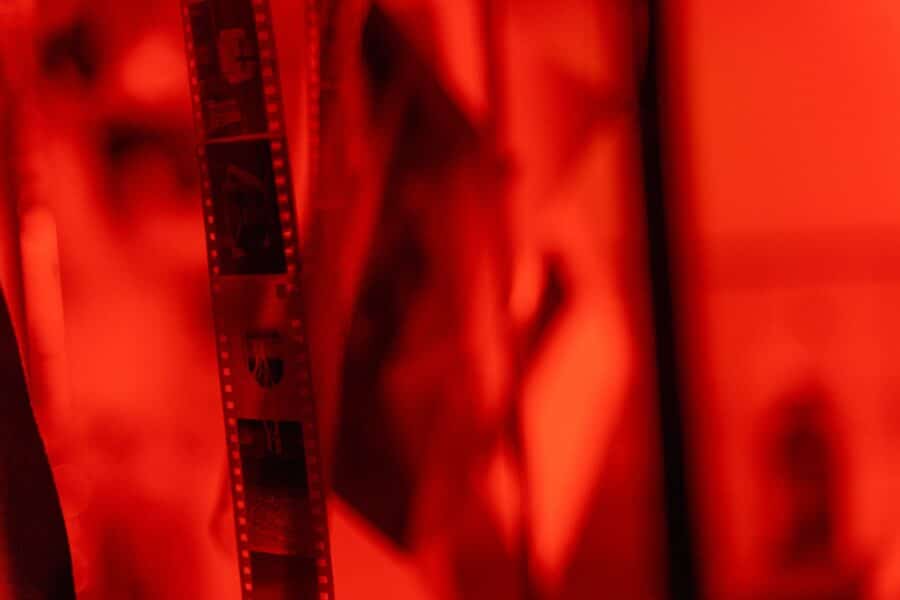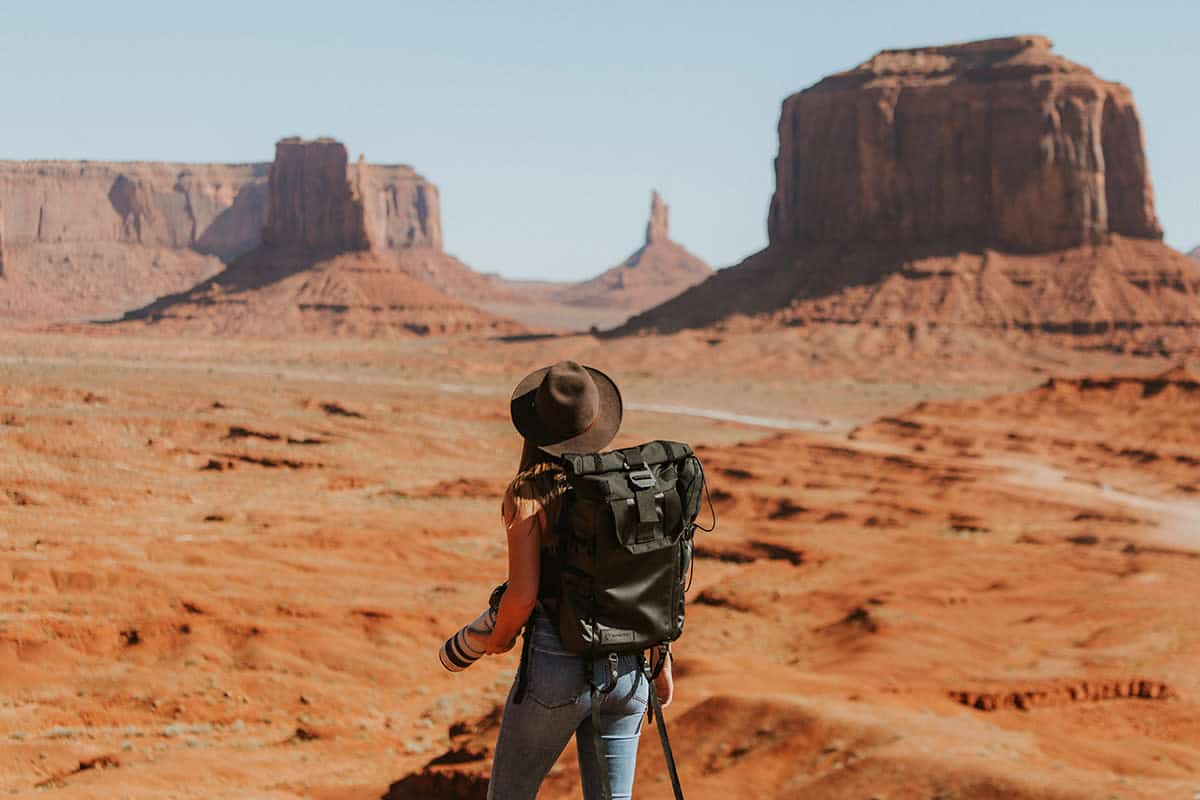Film is wonderful. Aside from being a technological miracle in which millions upon millions of microscopic silver halide crystals somehow capture a latent image, it’s a medium that will often dramatically improve the way you take photos. There are few more rewarding things for a photographer than eagerly receiving your work back from the lab or the drug store, only to find that your shots are exactly as you intended them. Few things, that is, other than the pleasure of developing film yourself.
The resurgent popularity of film is undeniable at this point. In the past few years, there have been announcements from Kodak about their reintroduction of classic stocks like T-Max 3200 and Ektachrome, and commercial film processing companies like Richard Photo Lab regularly test and compare available film stocks. For photographers already working with film or those looking to take the leap, one of the biggest drawbacks has been dwindling film development resources worldwide.
Development equipment, however, is cheap and easily available online; while there is a learning curve to developing your own film, it’s easy once you’ve mastered it. Moreover, learning how to develop film at home by yourself will give you a better understanding of the process behind shooting analog photos.
There are three main forms of the development process you’ll find yourself dealing with: black and white negative (black and white development process), color negative (C-41 process) and color reversal or slide film (E6 process), where the finished products are slides or diapositives. In this article, we’ll mostly be exploring the black and white process. I strongly recommend beginning home developing with black and white film rolls, especially 35mm, as it is dramatically less complicated for beginners and requires less equipment to develop.
The Equipment You’ll Need for Film Developing
- Black and white developer, fixer and (optional) stop bath.
- A changing bag, to facilitate removing the film from its canister (35mm film) or spool (120 film) to your developing tank.
- A developing tank and reels. This is where the actual developing takes place after you load your film in the reel. Your developing tank is a light-tight box that ensures there is complete darkness during the developing process.
- A digital thermometer, to ensure your chemistry is at the right temperature.
- A timer, to ensure correct development times.
- A bottle opener, scissors. These are both solely used for 35mm to remove the film from its canister.
- Beakers/Containers, for measuring the requisite amount of chemistry correctly.
- Bottles, for storing your chemistry.
- Film clips, and a bathroom for drying your film after they develop.
- A sink, bath, or anywhere with access to a water supply. This is where the developing will ideally take place.
- A funnel for each bottle of chemicals, to help prevent most spills while pouring chemicals back into their bottles for reuse.
1. Choose Your Developer
Unlike with color developing (both C41 and E6), in which essentially all color developers work largely the same way, there is a myriad of developers for black and white film, and it can be difficult to decipher which one will work best for you.
There are both liquid and power developers available, as well as “solvent” (fine-grain) and “non-solvent” (high-acutance) developers. There are minimal differences between liquid and powder; powder can be stored for longer periods and you can mix only part of the chemistry together for only as much developer as required. Deciding on which developer you use is largely a matter of personal taste and dependent on what you want out of your photographs.
Solvent developers such as ID-11, D76, Perceptol, Microphen and XTOL, when mixed at stock or a weak dilution, provide fine grain and are forgiving enough to cover a wide range of exposures on a single roll of film. Non-solvent developers such as Rodinal, HC-110, FX-1 and PMK (Pyro), meanwhile, give increased grain but an increase in sharpness.
To complicate things further, most fine-grain developers can be diluted at various strengths to increase sharpness, although this often comes at the cost of grain. Again, this is likely down to personal taste. Diluting provides more working solution for more film, but stock can usually be re-used up to ten times with increased development time.
Personally, I largely use ID-11 or D76 (they are mostly accepted as identical developers) diluted to 1+1 with Kodak Tri-X film for a trade-off between grain and acutance, and use Ilford Perceptol and Microphen at stock for slow (ISO100 or under) films or fast (ISO 800+) films, respectively. Other recommended developers for beginners are Ilfotec DD-X, Ilfosol 3, or Diafine. Both ID-11 and D76 are widely regarded as industry standards and are the most accepting of a wide variety of development times and temperatures.
From my own experience, most different types of fixer and stop bath will work similarly. I generally use Ilford Rapid Fixer as instructed on the packaging and have had no problems with this.
2. Mix the Chemistry
There are a few safety precautions you need to take before starting this development process. Ensure that you wear rubber gloves at all times, and that you’re carrying out the developing in a well-ventilated area. If you feel faint, dizzy or otherwise unwell, make sure to take a break or leave the room. The liquids used in these photographs are for demonstrative purposes, but you should always make sure to use rubber gloves when handling potentially hazardous chemicals.
To start, you’re going to need to mix your chemistry. For powder developers, you’ll need to prepare the developer according to the instructions, likely involving filling a beaker to a set level (eg. 800ml) before pouring in developer parts A and B and filling it up with water to the level of solution you need. As mentioned, if you’re planning on using dilute solution, you’ll need to take that into account too. If you’re using powder, you’ll need to wait for your working solution to come back down to room temperature, usually 20°C/68°F or as close as possible, which is generally the working temperature for most black and white film. Measure this using your digital thermometer.
For both liquid developer as well as most forms of fixer, you’ll have to dilute your solution according to instructions. For developing, you’ll need to use only a certain amount of solution, which your developing tank will usually specify. For mine, 375ml for 35mm/590 for 120 film/750ml for 35mm x2 (meaning two rolls of 35mm film) are specified.
3. Load the Film for Development
Once your working solution is prepared, you’ll need to load your film onto the developing tank. First, you’ll need to place your reel and the center of the tank into the tank itself as pictured, before putting the lid on top and ensuring the agitator is locked into the developing tank center. This is so you can twist the agitator, thereby moving the reel (with the film inside) on the inside through the developer and fixer while ensuring that all parts of the film consistently have access to fresh chemicals.
Next, place the tank (with film, center, lid, and agitator included), film, scissors and bottle opener inside the changing bag and ensure that it is fully zipped up and closed. Place your arms inside the designated holes in the changing bag so that at least your arms up to your elbows are within and ensure that there’s no space for light to seep in. You want to make sure that the tank is light-tight during the entire film developing process.
The next steps must take place blind inside the closed changing bag so the film is continuously in complete darkness. At no point until the film is wound on to the reel and then placed into the tank and the tank firmly closed can you open the changing bag.
Take the developing tank lid off and the reel out before applying your bottle opener to the top or bottom of your film canister. You use it much the same way you’d open a glass bottle, peeling one side of either end off before removing the spool from the canister. Unfurl the film from the spool before cutting the film at the end attached to the spool (unless you want to accidentally cut into your undeveloped pictures).
Next is the tricky part. Taking one end of the film (fat end without the leader recommended), you need to feed it into the film reel. For most collapsible reels, you’ll need to feed part of the film into the opening of both reel parts together before winding one side of the reel to continue winding the whole of the roll of film onto the reel. As this is a tricky procedure, it’s worth the time for those new to developing to practice on either a roll that’s not of much importance or practicing winding a pre-developed roll of film onto the reel in daylight. This counts doubly when using 120 film, which due to its larger size is more prone to bending and friction and is subsequently more difficult to wind. Use the uncut film to practice loading the end onto your reel, winding, and closing in the tank; repeat the process several times until you feel more sure about the movements. You can also practice using the changing bag to load the film just as you will with your new rolls. Muscle memory can be a huge asset when you can’t see what you are doing.
Once the film is wound, place your reel onto the center, firmly place the lid on the tank and ensure the agitator is placed in the developing tank lid. You can now open the changing bag and remove the tank.
4. Pre-Wash or Pre-Soak Your Film
The pre-wash step is to prevent air bubbles from forming on the film. These can occur when the developer is added to dry film. Pour cold or lukewarm water from the tap into the agitator/hole in the tank and fill it to the brim. It’s vital that you do not pour water into the tank that is too hot or inconsistent in temperature otherwise the emulsion can melt, whereas adding water of very varied temperatures such as cold-hot can cause “lizard-skin” patterns on the film from reticulation. As a rough estimate, soak the film for 2 to 5 minutes.
5. Develop your film
After soaking, pour the water out of the tank. If the water is a weird color or looks murky, don’t worry, this is entirely normal. With the thermometer, test the temperature of your developer to ensure that it’s at 20°C/68°F. If it’s colder, you’ll need to warm the solution. The best way to do this is to fill your sink with warm water, place the beaker within it and wait for the solution to warm. If it’s too warm, you’ll need to cool the solution down. As a recommendation, for every 1°C/1.8°F the solution differs from the norm, increase or decrease your developing time by 10%. For example, if developing at 19°C/66.2°F, add 10% to the overall developing time.
You now need to check the developing times for both your film and developer. Either the technical information included with your developer, datasheets from the company producing the film, or the massive development chart will help with this. For example, for my Fomapan 400, I’ll be using Perceptol developer, with a development time of 9-10 minutes, as Fomapan recommend.
Most developers will specify an agitation routine for developing. (However, some developers, like Rodinal, are usually specified as being for “stand development,” i.e. no agitation at all.) Perceptol’s technical data recommends 10 seconds of agitation for every minute of development, which is what I’ll be using. Whatever timing you use, ensure that your agitation times are consistent so that the film is constantly receiving fresh developer. Now that we’ve checked our developing times, chemistry temperature and agitation routine, we can pour the requisite amount of developer (375ml) into the tank and begin our timer.
It’s best to pour the developer slowly to prevent spillage. When we’ve poured all of our developer in, lift the tank and tap it down firmly onto a hard surface a couple of times. This is to ensure bubbles don’t form and potentially ruin development. Repeat this periodically, while agitating to the recommended routine. While some photographers prefer not to do this, I’ve had good results from adding around 30 seconds to one minute of development time to ensure that the negatives aren’t underdeveloped, as negative film is generally more tolerant of overexposure than under.
When the development time is over, either dispose of the chemistry or use the funnel and pour back into the container if you’re reusing it.
6. Add Stop Bath and Fixer
If you’re using a stop bath to stop development, you’ll now need to pour the required amount of stop bath solution for the recommended time into the tank, before pouring back into its container for reuse. Personally, as development times for negatives isn’t quite as critical as for darkroom prints, I find that running lukewarm water into the tank for 1-2 minutes following development is sufficient to stop development, and this removes the necessity of buying stop bath. There are varied opinions on the importance of stop bath, so you may want to test both ways and see what works best for you.
Next, we need to pour the required amount of fixer into the tank to remove the silver halide crystals from the film, or fix the image. Fixer is much less temperature- and time-sensitive than developer, and will prove usable at most temperatures from roughly 10°C/50°F through to 30°C/86°F. For example, Ilford Rapid Fixer recommends a fixing time between 2-5 minutes, though I’ve rarely used below five.
After the recommended time has elapsed, pour the fixer back into its container for reuse, and that’s it! You’ve developed your first roll of film.
7. Do a Final Rinse
Now all that’s left to do is the final wash, by placing the developing tank underneath the tap. Rinse the tank for a couple of minutes, before opening the lid and rinsing the film directly. After this is done, you can finally view the contents within! If everything has gone well, you should have a roll of perfectly exposed negatives.
The two most common problems beginner film developers are likely to encounter are negatives being “too thin,” or transparent, often caused by underexposure or underdevelopment; or negatives being “too dense” or dark, often caused by overexposure or overdevelopment.
When you unfurl your film, make sure to grip it at both ends where there are no negatives and shake it to remove water droplets.
As an optional final step, you can rinse the negatives with Photo-Flo, a film cleaner designed specifically to reduce drying and water marks on the dried-out film.
8. Hang Your Film up To Dry
Take your film clips and attach one to both ends of the film, to ensure that they don’t curl as it dries. For drying, the best setting is a moist, dust-free room, ideally a bathroom or on the inside of your shower while the air is reasonably humid. Hang your negatives one by one across the room. Usually, it takes somewhere between two and five hours for your negatives to dry.
Once your film is dry, you’re done. You can bask in the light of thousands of photographers before you are well versed in a practice and an art form that dates back all the way to the early 1800s!
9. Disposing of Developing Chemicals
Inevitably, your current batch of chemicals will reach their shelf-life, begin to get dark or smell different. Chemicals at the end of their life will not be as effective at developing your film, so it is a best practice to add a label with the mix date to your storage bottles or keep a sheet with the dates near where you store them, and update it each time you make a fresh batch.
Most Developer and Stop bath can typically be diluted with water and poured down your drain, although there are likely to be slight differences to the regulations for disposal of chemicals where you live. To reduce impact on the environment, check that your chemicals are generally safe according to the manufacturer to go down the sink. Next, look up what is allowed in your local area and follow the recommendations.
Spent Fixer will contain residual silver from the film processing, which should not be just dumped down the drain due to the negative effects it can have on the environment. Fixer should always go through a silver recovery process at a licensed location. Look into where Fixer can be disposed of safely in your area; your nearest waste disposal facility may have a place for chemical waste with metals, and some areas have local darkroom labs or photography supply stores that offer disposal for a fee.
Next Steps for Your Self-Developed Film
There are a number of things you can do with your negatives! Think of them as the raw files you obtain from your camera. As a start, you can:
- Take your negatives to a photo lab or drug store for scanning to a CD. Thankfully, even most stores and labs which don’t develop black and white film themselves can still scan it.
- Scan your film yourself with a dedicated film scanner. For scanning 35mm, the Epson Perfection V300 is a good affordable option. The Epson V600 or V550, or something similar may be one of the better choicse if you’re scanning medium format film. I would recommend this step for photographers versed in digital photography or those looking for complete creative control over the finished scan, as well as those who still want to use digital editing software on their images.
- Enlarge your negatives optically in a darkroom using an enlarger. For this process, you’ll need access to a darkroom or a light-tight room at home, as well as photographic paper and photo paper developing materials from which to make prints from your negatives.
Notes on Push and Pull Processing Film
“Pushing” or “pulling” film refers to a film developing technique that effectively increases or decreases the sensitivity photograph being processed. Push processing involves developing film for more time, or at a higher temperature than is recommended by the film manufacturer, resulting in effective overdevelopment of the film to compensate for underexposure in the camera or to achieve an overexposed effect. Pushing a film two stops, as an example, would effectively increase the sensitivity of an ISO 400 film to ISO 1600, allowing correct exposure in lower lighting conditions.
Pushing film also alters the visual characteristics of it, which can be a potential downside. You can expect to see higher contrast, less shadow detail, increased grain, and lower resolution, as well as saturated and distorted colors in color film. Some films, such as Kodak T-Max 3200, are actually nominally ISO 800 , but are designed to be “pushed” up to ISO 3200 as standard. ‘“Pulling” film, whilst less common, decreases contrast (and saturation) and increases grain.
Notes on Developing Color Film
It is certainly possible to develop color negative and color positive film at home, but there are added difficulties to consider. The C41-negative process itself is much more difficult, due to being extremely temperature sensitive, especially without a basis in developing black and white film. The best means of success is to heat all chemistry used (this is usually color developer, bleach, fixer (sometimes combined), and stabilizer) as well as the developing tank and film in a sink or faucet until it reaches 38°C/100°F before pouring and agitating.
Developing is the most critical point of developing film, as dramatic temperature changes can cause wide color changes. Another important change is the stabilizer, which is used to protect the dyes in the film from fading. C41 and E6 chemistry are generally considerably more expensive than for black and white, but most are designed for multiple reuse. Tetenal’s 1litre C41 kit, for example, develops between 12-20 rolls of film, but development times must be adjusted with repeated use.
Tips and Tricks on How to Develop Film at Home
With the tank and tray, you’ve eliminated the need for a darkroom to create a light-tight atmosphere for your film to develop. Developing film at home may seem a little difficult, especially with the way to load the film, the developing time, the soaking, and loading the rolls. However, there are lots of little tips and tricks that you can do to make sure the rolls are developed exactly the way you want. We’re going to share with you some important things to remember when you’re developing films at home.
How Long Should I Agitate the Film For?
The process of agitating the film can be daunting. The total process time it takes to develop your film should be around 5 minutes. You’ll want to agitate your film gently. During the first 30 seconds of the development, you should agitate the film constantly to ensure that the film is soaked thoroughly into the chemicals. However, make sure you’re not shaking the tank. You want to be as gently as possible, inverting it back and forth. After the first 30 seconds, you’ll want to hand rotate for 10 seconds every 30 seconds. When you’re counting your 10 seconds, do not shake the tank vigorously or else it will create bubbles as your film develop.
How Much Does it Cost to Develop Film at Home?
Sending your film to a lab will save you time, but developing rolls of your captured photographs at home is not as expensive as you think. The process of developing film at home will cost you the chemicals and tools. Depending on whether you’re developing in color, this will fluctuate the cost, but not by much.
Most people will tend to buy chemicals in bulk, as it will be cheaper and last for a longer time. The cost of the developer, fixer, stop bath, and other chemicals you buy will determine the price of developing your film. Now, you’ll also need to buy a tank or a tray. Of course, a tray will be much cheaper than a tank due to its size. Choose a process and tool kit that works best for you.
Is It Possible to Make Film at Home Without Chemicals?
We understand the using chemicals may not be the best option for many people when developing film at home. If you’re looking for a more environmentally friendly way on how to develop film at home without using the strong chemicals above, then you’ll want to give caffenol a try!
The process of caffenol uses products you can find in the kitchen. Using instant coffee, washing soda, and vitamin C, as well as some table salt, you can easily create the “chemicals” needed to develop your photographs.
All photos by the author. Liam Harrison is a photographer and writer based in Glasgow, Scotland.

More on film photography:
The IRL GIF: Turn Your Photos Into a Flip Book
Why You Should Try Soaking 35mm Film in Ramen Soup
How to Make 3D GIFs With a Nishika N8000 Camera












